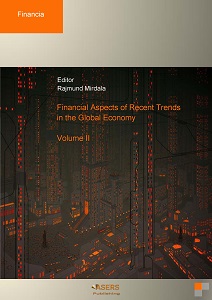FORCED CHANGES IN BANKS FINANCING GROWTH IN EAST EUROPEAN COUNTRIES
FORCED CHANGES IN BANKS FINANCING GROWTH IN EAST EUROPEAN COUNTRIES
Author(s): Nebojša Savić, Goran PITIC, Lidija Barjaktarović
Subject(s): Economy, Supranational / Global Economy, Business Economy / Management, Financial Markets
Published by: ASERS Publishing
Keywords: country risk; interest rate; foreign source of financing; European emerging markets
Summary/Abstract: The effects of the Great Recession so far had numerous negative consequences reflected primarily in strong recession and rising unemployment. They have varied from country to country and from region to region. The sample of the analyzed countries includes: the group of eight Central and East European (CEE-8) countries (the Czech Republic, Estonia, Hungary, Latvia, Lithuania, Poland, Slovakia and Slovenia) and the group of eight South East European (SEE-8) countries (Albania, Bosnia and Herzegovina, Bulgaria, Croatia, FYR Macedonia, Montenegro, Romania and Serbia). The experience during the Great Recession shows that excessive reliance on foreign capital inflows makes a country vulnerable. For CEE-8 and SEE-8 it is very important to increase domestic savings. Due to the lack of domestic sources of financing banks in CEE-8 and SEE-8 were faced with the following alternatives: to opt for the equity financing of their subsidiaries or for debt financing arrangements through cross-border credits (CBCs). Banks opted for CBCs, because it was not covered by the provision to deposit required reserves (RR). This also suited banks‟ head offices because, due to the crisis, they also had to consolidate their balances and ensure the appropriate level of capital adequacy. The analyses show that CEE-8 and, in particular, SEE-8 are heavily dependent on the availability of foreign sources of finance. During the crisis lending interest rates (LIRs) in CEE-8 declined from 8.24% to 6.64% and in SEE-8 countries from 11.50% to 11.00%. In each group are five countries which succeeded in reducing LIRs during the crisis period and the two ones which increased them (Slovenia and Slovakia in CEE-8, and Serbia and Bosnia and Herzegovina in SEE-8. During the Great Recession, changes of LIRs were mostly influenced by credit risk, required reserves and withholding tax.
Book: Financial Aspects of Recent Trends in the Global Economy - Volume II
- Page Range: 189-203
- Page Count: 15
- Publication Year: 2013
- Language: English
- Content File-PDF

